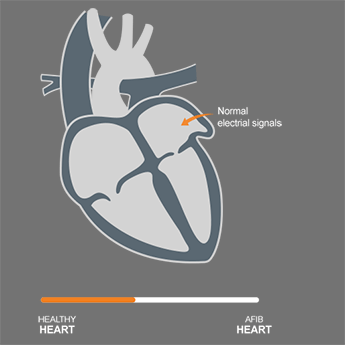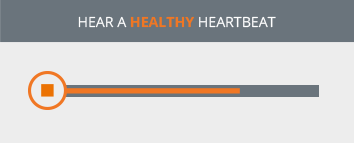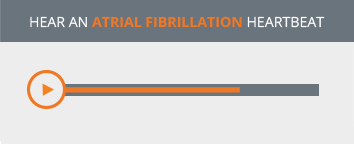ASAP-TOO Clinical Trial

What Is Atrial Fibrillation?
Atrial fibrillation (sometimes called AFib or AF) is a common heart rhythm disorder that affects more than 5 million Americans1 and can increase your risk of stroke. You can take charge of your atrial fibrillation by learning more about its symptoms and complications, how it affects your heart, and what causes it.
In a healthy beating heart, your blood pumps in a steady, coordinated fashion in the chambers of your heart to and from other parts of your body. Atrial fibrillation happens when the top two chambers of the heart, the atria, beat too fast and with an irregular rhythm (fibrillation). Atrial fibrillation can decrease the heart’s pumping capacity by as much as 30%.2 This can cause blood cells to pool and stick together, forming clots in an area of the heart called the left atrial appendage (LAA).
Everyone has a left atrial appendage. It’s about the size of your thumb and looks like a small pouch on the top of your heart. If a clot escapes from the LAA and gets into your arteries, it may block the blood supply to the brain and cause a stroke.
What Are the Symptoms?
- Heart palpitations
- Chest pain
- Dizziness
- Fainting
- Shortness of breath
- Lowered ability to exercise
- Feeling tired

What Is a Stroke?
There are two types of stroke: ischemic and hemorrhagic.
An ischemic stroke happens when the blood flow to the brain is reduced or blocked. Without the oxygen-rich blood and nutrients your brain cells need to thrive, your brain cells start to die, which can lead to brain damage.
A hemorrhagic stroke happens when a blood vessel in the brain ruptures, causing blood to spill into the brain. This creates swelling and pressure, damaging cells in the brain.

How Does Atrial Fibrillation Increase the Risk of Stroke?
Atrial fibrillation can decrease the heart’s ability to pump by as much as 30%. As a result, blood pools in the top two chambers of the heart, called the atria. Since the blood isn’t pumped out of the heart normally, it’s easier for the blood cells to stick together and form clots in an area of the heart called the left atrial appendage (LAA). The LAA is about the size of your thumb and looks like a small pouch on the top of your heart.
Blood clots can break loose from the LAA and travel to the brain causing a stroke. In non-valvular atrial fibrillation, the LAA is believed to be the source of most stroke-causing blood clots that come from the heart.
 |

Stroke Symptoms
- Sudden numbness, weakness, or paralysis of the face, arm, or leg (especially on only one side of the body)
- Sudden confusion
- Sudden trouble speaking or understanding speech
- Sudden trouble seeing with one or both eyes
- Sudden trouble walking, dizziness, loss of balance, or lack of coordination
- Sudden severe headache with no known cause
A stroke is a medical emergency. So if you experience any of the symptoms above, seek medical attention immediately.
If your brain cells die or become damaged due to a stroke, it causes symptoms in the parts of your body that the cells control.

1 Colilla et al. Am J Cardiology, 2013; 112:1142-1147.
2 Harvard Health Publications. Atrial Fibrillation: Common, Serious, Treatable. November 1, 2011. https://www.health.harvard.edu/heart-health/atrial-fibrillation-common-serious-treatable. Accessed October 28, 2015.
3 Holmes DR et al. Seminars in Neurology, 2010; 30:528–536.
4 Blackshear J and Odell J. Annals of Thoracic Surgery. 1996; 61:755-759
PATIENT SAFETY INFORMATION
The WATCHMAN Device is a permanent implant designed to close the left atrial appendage in the heart in an effort to reduce the risk of stroke. With all medical procedures there are risks associated with the implant procedure and the use of the device. The risks include but are not limited to accidental heart puncture, air embolism, allergic reaction, anemia, anesthesia risks, arrhythmias, AV (Arteriovenous) fistula, bleeding or throat pain from the TEE (Trans Esophageal Echo) probe, blood clot or air bubbles in the lungs or other organs, bruising at the catheter insertion site, clot formation on the WATCHMAN™ Closure Device, cranial bleed, excessive bleeding, gastrointestinal bleeding, groin puncture bleed, hypotension, infection/pneumonia, pneumothorax, pulmonary edema, pulmonary vein obstruction, renal failure, stroke, thrombosis and transient ischemic attack. In rare cases death can occur. Be sure to talk with your doctor so that you thoroughly understand all of the risks and benefits associated with the implantation of the WATCHMAN Device.

